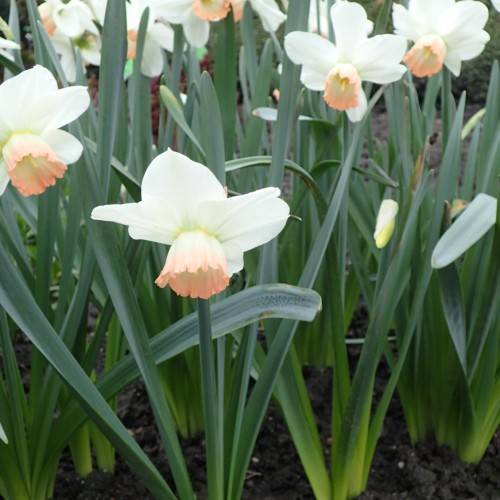
large-cupped daffodil
Narcissus 'Easter Bonnet'
Cycle:
Perennial
Watering:
Average
Hardiness Zone:
4 - 8
Flowers:
Flowers
Sun:
Full sun,part shade
Leaf:
Yes
Growth Rate:
High
Maintenance:
Low
Drought Tolerant:
Yes
Care Level:
Medium
watering
Large-cupped daffodils, also known as Narcissus 'Easter Bonnet', should be watered thoroughly when the soil begins to feel dry to the touch. Typically once a week is sufficient under the right conditions. Water should be applied to the root zone of the daffodil so that it is just moist, but not overly soggy. During extended periods of hot and dry weather, water may need to be applied more frequently. It's also important to water the plant at the base instead of from above to avoid wetting the leaves.
sunlight
The large-cupped daffodil (Narcissus 'Easter Bonnet') requires at least 6 to 8 hours of direct sunlight per day in order to thrive. The plant should be placed in a sunny spot outdoors or kept near a south-facing window indoors and receive the full benefit of the sun's rays. Avoiding excessive shade is important for the development of healthy foliage and vibrant blooms. Plants should be rotated a few times a week to aid in even sun exposure. A good rule of thumb is to ensure that the area is receiving sunlight for at least 4 hours during the morning, followed by 4 hours during the afternoon. If the sun is too intense, especially during warmer months, partial shade may be beneficial.
pruning
Large-cupped daffodil (Narcissus 'Easter Bonnet') should be pruned right after flowering in late spring. Prune off spent flowers and any dead foliage, as well as any remaining foliage that has become yellow. Cut the foliage back to the base of the plant. Remove any damaged or dead stems to encourage healthy, new growth in the next season. For best results, fertilize the plants after pruning.
